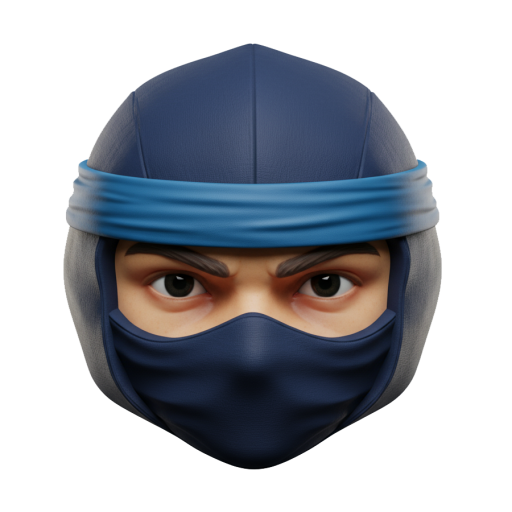Screen printing has powered apparel for decades—fast on repeat runs, familiar, and predictable. Direct-to-film (DTF) arrived with a different promise: sharp detail, vibrant color, and on-demand flexibility. Choosing between them isn’t a technical checkbox; it’s a brand decision tied to your SKU strategy, deadlines, and quality expectations. Based on insights from ninja transfer‘s work with global apparel teams, here’s a pragmatic way to make the call.
Let me back up for a moment: when people ask about dtf prints meaning, they’re really asking how the transfer is built. DTF uses Inkjet Printing onto PET film, applies a hot-melt powder, cures it, then heat-presses the design onto fabric. No screens, minimal setup, and it comfortably handles multi-color gradients and small details.
Here’s where it gets interesting. If your calendar is full of micro-drops, limited capsules, and late-stage artwork tweaks, DTF often fits. If you’re producing thousands of identical shirts for retail, screen printing still earns its place. The right choice depends on your mix of volume, variability, and the brand’s tolerance for process change.
Technology Comparison Matrix
At a technology level, DTF is Digital Printing plus Thermal Transfer; screen printing is a stencil-based process that pushes ink through mesh. DTF’s color gamut is wide on cotton and blends, and with tuned profiles you can hold color accuracy within ΔE 2–4 across common hues—good enough for brand palettes with tight tolerances. Resolution is typically in the 600–1200 dpi range, which explains the crisp micro-text and hairline strokes. Screen printing, by contrast, shines with large, flat color fields and robust inks but needs a screen per color, which shapes both time and cost.
Throughput is where the trade-offs show. A single DTF workstation can produce roughly 20–50 transfer sheets per hour depending on design coverage, curing setup, and operator flow. Screen printing lines can print 100–300 garments per hour once dialed in, but plan on 20–60 minutes of setup per color and more when artwork changes late. Waste Rate tends to be lower in DTF for short runs because you skip screen burn-in; in high-volume scenarios, screen printing’s consumable cost per unit often lands lower. None of this is universal—it’s pattern, not law.
Materials and process settings matter. Common PET films are 70–100 μm; heat-press transfers typically bond at 150–165°C (302–329°F) for 12–18 seconds depending on fabric and adhesive. Well-cured DTF designs generally pass 25–40 wash cycles before visible fade when garments are laundered cold; screen printing with plastisol or water-based inks can exceed that, but fabric and wash behavior will swing outcomes. If your brief focuses on dtf prints for shirts with tight gradients, fine lines, and small type, DTF holds detail without building screen complexity.
Application Suitability Assessment
Match process to portfolio. For Short-Run, Seasonal, and Personalized capsules (think 50–500 units per design, 20–80 SKUs in a drop), DTF reduces Changeover Time and gives you agility for last-minute art edits. It also supports Variable Data nicely—names, numbers, small regional variations—without remaking screens. For Long-Run, High-Volume retail programs with stable art and repeat orders, screen printing still delivers strong unit economics and a robust hand-feel when the ink and fabric are paired well.
A quick field story: a streetwear label in São Paulo piloted a 120-piece capsule using ninja dtf transfer for multi-gradient chest graphics. Their production manager—colleagues jokingly called him the dtf transfer ninja—tuned press dwell to 14 seconds and dropped the temperature by 5°C to reduce sheen on brushed fleece. The batch landed with ΔE under 3 across reprints and held up for 30–35 wash cycles. The lesson wasn’t that DTF is perfect; it was that small parameter moves changed the fabric feel to match the brand’s craft message.
If your retail partners demand absolute consistency, build a test grid: three fabrics (100% cotton, 60/40 blends, performance poly), two transfer types, and a limited color set in both processes. Evaluate shelf impact, hand-feel, and wash durability over 20–40 cycles. For dtf prints for shirts that include micro-detail or photographic elements, DTF usually wins visual fidelity. For large fields of a single brand color, screen printing gives a classic look many consumers expect. Neither is “better” in a vacuum—that’s a branding choice.
Implementation Planning
Treat implementation like a mini product launch. Start with Material Sourcing (PET film around 75 μm, adhesive powder matched to cotton vs poly), define Color Management targets (ΔE ≤ 3 for brand colors), and lock a Quality Control routine (FPY% in the 90–95 range is a practical early target). Build a simple Control System checklist: press temperature and dwell logs, curing consistency checks, and a small reference panel per batch for visual sign-off. If you run both processes, document a Decision-Making Framework: artwork complexity, unit volume, deadline, and budget trigger points that route to DTF or screen.
FAQ — how to get dtf prints? You have two paths. 1) Outsource: share print-ready files (CMYK + white), specify film thickness, fabric type, and wash targets; request a small proof run (10–20 transfers) before scaling. 2) In-house: invest in an Inkjet Printing setup rated for DTF, a reliable curing unit, and a calibrated heat press; start with one fabric class and expand. If you source from vendors, a supplier like ninja dtf transfer can provide spec sheets and test swatches; ask for dwell/temperature recommendations and expected wash cycle ranges for your fabric mix.
Budgeting is straightforward if you model real work. For DTF, count film, adhesive powder, ink, and operator time; for screen printing, include screens, setup labor, and ink per color. When you compare, look at Total Cost of Ownership over 8–14 months, not just unit cost this week. Create a Payback Period window based on your SKU plan, and be honest about changeover frequency. If your roadmap points to nimble capsules, a DTF route—or a hybrid play—often makes sense. If you want help building that matrix, talk to ninja transfer and bring your SKU and timeline data to the conversation.
